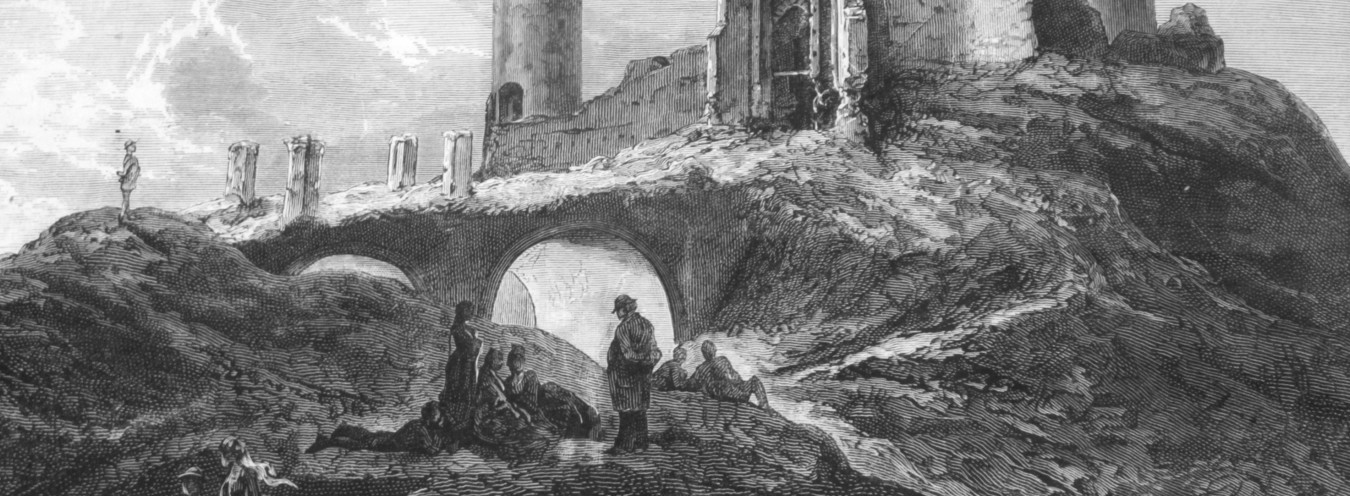
Ruins
It’s a pretty district, and there are the castle ruins. (103)
Those who visit Duchess Zasławska often go for sentimental, romantic walks to the ruins of her family castle, an impressive vestige of the noble past. Indeed, the remnants are like the token of the glorious history of the nation in general and one of its distinguished families in particular. They constitute a perfect scenery for story-telling, confidences, secret meetings of lovers. And for momentous events as well: it is here that Wokulski presents Izabela with his most precious amulet (a metal plate given to him by Professor Geist) – and it is here as well that she loses it while frolicking with Kazimierz Starski.
Not all characters, however, are sensitive to the poetry of ruins. A new, pragmatic approach towards the useless rubble is adopted by Countess Karolowa, who demolishes what is left of the castle and uses the building material to erect a granary.
As in the Polish lexicon, so in The Doll the word “ruin” has broader connotations. While walking in the district of Powiśle, Wokulski sees another type of ruins: dilapidated dens of the poor, with roofs overgrown with moss, […] tumbledown walls, windows patched with paper or stuffed with rags. Moreover, though the nobility did not actually live in ruins, more than one titled character in the novel slides into financial ruin due to prodigal habits and a wasteful lifestyle. For Tomasz Łęcki six thousand roubles a year is poverty, and Baron Krzeszowski complains when pestered by requests to pay his debts: It’s the rent collectors who are really the ruin of me. The moral ruin, in turn, is skillfully represented in the characters of Kazimierz Starski the idler and Maruszewicz the fraudster.
At some point, Wokulski also defines himself with the same term: I’m nothing but a ruin, of the worst kind – a moral ruin. The public suspects him of underhand dealings and expects to see him go bankrupt overnight, but this is certainly not why he finds himself on the brink of some fatal precipice. He turns into a ruin because of his love for Izabela, a flaming passion which surely threatened to reduce him to ashes. Does Wokulski die among the ruins in Zasław, consumed by fire? It is one of the possible readings of The Doll.
The action of the novel develops at the time of waning optimism and a painful loss of political illusions. A falling ruin, rife with moral decay, is Poland itself. It is quickly sinking from the high hopes of positivist thinkers to decadent pessimism.
Bibliografia
- A. Kowalczykowa, Pejzaż romantyczny, Kraków 1982.
- G. Królikiewicz, Terytorium ruin. Ruina jako obraz i temat romantyczny, Kraków 1993.



